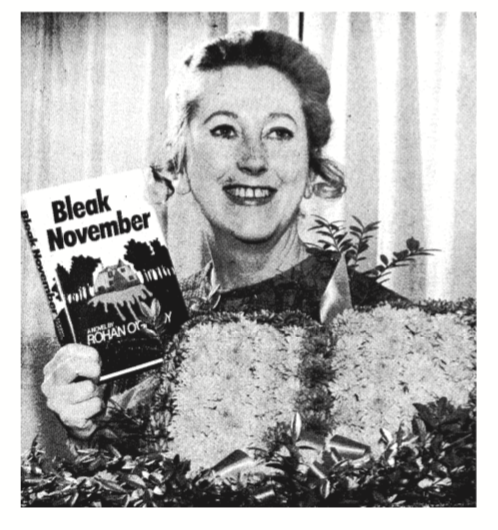I.
In 1961, a thirty-nine-year-old housewife in a quiet Vancouver suburb began work on her third novel. June Skinner had come to serious fiction writing fairly late—reviews would later wonder how she found the time, what with all the vacuuming and cooking—and she kept it somewhat apart, typing up pages at night after her three children went to bed, or tweaking text after they headed to school.
Skinner’s previous two books, both written recently in this manner, and all under a pen name, had been dark and fantastical pieces. The first, O’Houlihan’s Jest: A Lament for the Irish, examined the author’s own Irish heritage through a mythic martyr figure. The second, Pippin’s Journal, was a Gothic turn set in a haunted nineteenth-century manor.
Her third work aimed closer to home. It starred two younger leads—their grand spats, if not quite their personalities, mimicked those of Skinner’s own adolescent daughters, Mary and Jan—who spend a summer in British Columbia’s Gulf Islands. Skinner herself had vacationed on one of these, named Salt Spring, and this was the model she had in mind as she detailed the novel’s own unnamed island.
For her daughters, the book—which was unusually dark for a work about young children—took shape in tantalizing fashion, appearing on the breakfast table a half chapter at a time. The novel was read at its writing pace, and this allowed its scenes and characters to grow in scale.
I am fairly sure I can picture what this was like for Mary and Jan Skinner—the way the book’s figures would have lifted off the pages with a strange insistence. What they could not have known then—and would not learn for another forty-seven years, when the Skinners’ story and mine finally came together—was that their mother’s third novel was actually going to have two futures. And in the second of these, the book wasn’t going to fade away at all, as it seemed to in the first. Instead, it would become the object of an unusual obsession, which would involve it being rolled out in much the same manner as it was for them, only repeatedly and to many hundreds of ten-year-olds about three thousand miles away, one of whom, in 1992, was me.
II.
Likely every primary school has its resident fearsome teacher, the one whose name rattles ominously through the hallways. Anecdotally at least, this seems especially true of small, old, Northeastern private schools, like the one I attended in Pennsylvania in the early 1990s. The outside world is slow to intrude on these places, and schoolmasters’ tics may be left to metastasize.
At our school, the whispered name had a particularly...
You have reached your article limit
Sign up for a digital subscription and continue reading all new issues, plus our entire archives, for just $1.50/month.
Already a subscriber? Sign in





